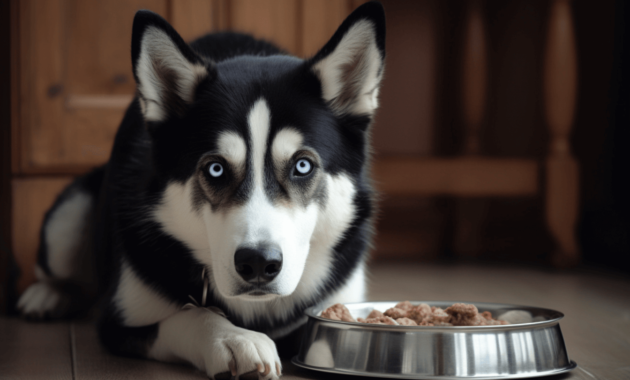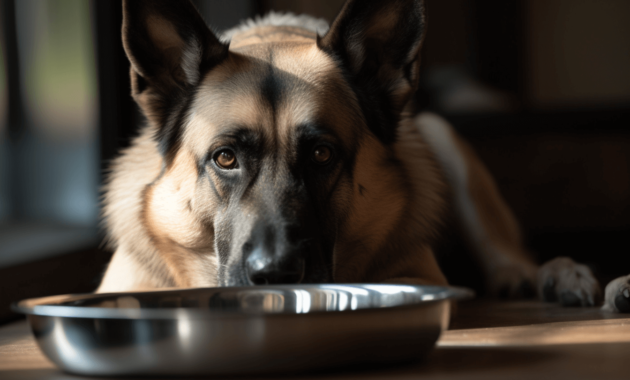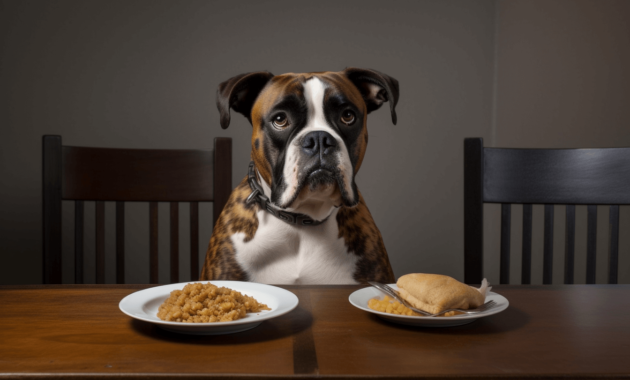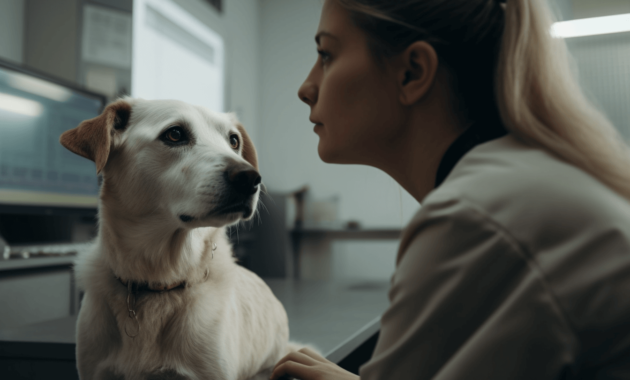
As a veterinarian, I’m here to help you understand why your pup may not be interested in eating and what can be done to get them back on track.
Your pup’s diet is essential to their well-being: it helps keep them healthy, energetic, and happy.
That’s why it’s so essential for us to figure out what could be causing them to turn away from their meals.
I’m here to walk you through the steps necessary to get your furry friend back on track nutritionally.
Let’s begin by looking at some underlying causes behind an aversion to food. It could be something as simple as a change in routine or environment that has caused your pup’s appetite to drop off.
Or maybe more severe issues like an underlying health problem or dietary intolerance need further investigation.
No matter the cause, we must identify it and take steps towards finding a solution.
With patience and some detective work, I’m confident we can get your pup back on track nutritionally!
Table of Contents
- Look For Changes In Routine Or Environment
- Evaluate Any Underlying Health Issues
- Consider Dietary Intolerances
- Introduce New Foods Slowly
- Consult With A Veterinary Nutritionist
- Frequently Asked Questions
- How Can I Tell If My Dog Has An Underlying Health Issue?
- What Are Some Signs That My Dog May Have A Dietary Intolerance?
- How Do I Know If There Have Been Changes In My Dog’s Routine Or Environment?
- How Can I Safely And Effectively Introduce New Foods To My Dog?
- What Should I Expect From Consulting With A Veterinary Nutritionist?
- Conclusion
Look For Changes In Routine Or Environment

If your dog won’t eat, looking for changes in their routine or environment is essential.
Start by looking at the food you’re offering them. Has their diet recently changed? If so, gradually start introducing the new food, mixing it with the old one to create a familiar flavour.
It may also help to offer alternate treats like cooked meat or fish that your dog enjoys but isn’t used to having as part of their regular meal.
Noise aversion could also be a factor if your dog is susceptible to loud noises or sudden movements. If this is the case, try having mealtime in a quiet area of your home away from potential distractions.
Move slowly and calmly when preparing their food and during mealtimes, speaking reassuringly and offering praise.
In some cases, dogs may refuse food due to medical issues like digestive problems or tooth decay.
If you’ve ruled out any changes in their routine or environment and they’re still not eating, it may be worth consulting with a veterinary nutritionist for further advice.
Evaluate Any Underlying Health Issues

Watching your dog refuse to eat can be stressful as a pet parent.
Before trying something drastic, evaluating any underlying health issues causing the lack of appetite is essential.
The first step is to examine their diet and make sure they are getting all the essential nutrients they need from their food.
If you’ve recently switched your dog’s food or changed their eating routine, consider returning to what worked for them before or consulting a veterinary nutritionist about better options.
It’s also essential to evaluate stress levels, which can cause dogs to lose their appetite.
Look for signs of stress such as panting, pacing, whining, hiding away or trembling.
If you notice these behaviours, try creating a calm and soothing environment for your pup by eliminating any potential sources of stress like loud noises, unfamiliar people or animals in the home.
Taking walks together in quiet areas or playing calming music may also help reduce their anxiety and improve their appetite.
Providing plenty of love and reassurance is critical when dealing with a picky eater!
Make mealtime memorable by setting up a cozy spot where they can eat peacefully and avoid distractions.
Place treats around the bowl while they eat so they have something else to focus on besides food and reward them whenever possible when they take a bite.
With time and patience, hopefully, this will encourage them to start eating again!
Consider Dietary Intolerances
Ah, the age-old problem: why won’t my dog eat? The truth is, there could be any number of reasons. After all, it’s not always as straightforward as it seems. But don’t fret – let’s investigate further and see if we can figure out what’s going on.
First, let’s start by ruling out any underlying health issues.
If your pup has lost its appetite, it might be a sign of an illness or injury that needs to be addressed. Make sure to take them for a checkup with their veterinarian if this is the case.
Now that we’ve established no health concerns, we must consider dietary intolerances or allergies.
Different dogs have different nutritional needs and sensitivities – so investigate the food brands you’re using and check for any allergens that need to be avoided.
Switching up your pup’s diet may help them regain their appetite and get those tail wags going again!
Introduce New Foods Slowly
If your dog is refusing to eat, don’t worry! It’s an expected behaviour seen in dogs of all ages.
The first step to try is to introduce new foods slowly to get them interested in eating again.
Start with small portions and different flavours that they may enjoy.
Try wet food, dry kibble, homemade meals, freeze-dried treats – the list goes on! Add warm water or broth to their food for flavour and moisture.
Introducing toys into their mealtime can also be a great way to encourage them to eat if it’s become a chore for them.
This is especially helpful for puppies who need some extra stimulation.
Toys like chew sticks and interactive feeders are great options because they keep your pup entertained while offering rewards for their curiosity.
It’s equally important not to force them to finish the entire meal immediately if they’re uninterested.
Ensure you keep an eye on portion sizes so they don’t overindulge, and have access to clean water throughout the day to stay hydrated.
With patience and a little creativity, you’ll have your pup back eating in no time!
Consult With A Veterinary Nutritionist

Knowing what to do can be difficult when your dog doesn’t eat. As a veterinary nutritionist, I recommend that you first determine the cause of your dog’s lack of appetite.
This could be due to an underlying medical condition or dietary intolerance, so always consult your veterinarian before changing your pet’s diet.
The next step is to serve smaller portions and encourage exercise.
If you serve too much food at once, your pet may be overwhelmed and not want to eat.
To ensure your pet gets all the essential nutrients from their meal, use a premium quality food specifically formulated for dogs of their age and activity level.
You can also add flavour enhancers, such as pre-cooked chicken or beef broth, which will make the food more appealing for them.
Finally, make it easier for your dog to access the food by using an elevated bowl or slightly angled bowl.
This will prevent them from bending over too much and help them feel more comfortable when eating their meal.
Additionally, keep mealtimes calm by avoiding loud noises and distractions like TV or other pets while eating. Following these steps should help ensure that your dog enjoys mealtimes again!
| Serve Smaller Portions | Encourage Exercise | Use Quality Food |
|---|---|---|
| Reduce overwhelm | Improve digestion | Essential nutrients |
| Easier access | Stimulate appetite | Appealing flavor |
Frequently Asked Questions
How Can I Tell If My Dog Has An Underlying Health Issue?
If your furry friend isn’t eating, it could indicate an underlying health issue.
As a veterinary nutritionist, I encourage pet owners to consider illness prevention and food variety when seeking answers.
Variety can help prevent boredom and provides the essential nutrients for optimal health.
Be sure to consult with your veterinarian if you suspect your pup may have an illness or disease, as they will be best able to diagnose their condition and provide treatment options.
What Are Some Signs That My Dog May Have A Dietary Intolerance?
John, a Labrador Retriever, was recently brought into my office due to a decreased appetite. After performing allergen testing and a dietary assessment, it became clear that he had a dietary intolerance.
Common signs include vomiting, diarrhea, skin rashes or hives, and excessive itching.
If you suspect your dog may have a dietary intolerance, look for any of these symptoms and visit your veterinarian for an evaluation.
Allergen testing and dietary assessments can help narrow down the cause of the issue and get your pup back on track to eating normally again!
How Do I Know If There Have Been Changes In My Dog’s Routine Or Environment?
It’s essential to look for signs that your pup’s playtime or environment may have changed if it is not eating.
Playtime changes, stressful events, and other changes in routine can indicate a shift in their nutritional needs.
As a veterinary nutritionist, I recommend monitoring your pup’s behaviour closely and assessing any changes affecting their eating habits.
If you notice any changes, talk to your vet immediately to discuss the steps you can take to ensure they get the nutrition they need.
How Can I Safely And Effectively Introduce New Foods To My Dog?
Introducing new foods to your furry family member can seem daunting, but it doesn’t have to be! With a few simple steps, you can make taste testing a fun experience for your pup.
Try breaking the food into small pieces and gradually increasing each piece’s size over time.
Try feeding at different times of day and incorporate positive reinforcement such as treats if they try a bite.
And remember, take it slow, and always consult your trusted veterinary nutritionist for more advice.
What Should I Expect From Consulting With A Veterinary Nutritionist?
As a veterinary nutritionist, I’m here to help you understand your pup’s nutritional requirements and make any necessary dietary adjustments.
Consulting with me can be beneficial when designing a tailored diet plan for your pup that meets their individual needs.
During our consultation, we’ll discuss your pup’s lifestyle, age, breed and health history to create a plan that suits them best.
You can count on me to be with you every step of the way, walking you through each step so you can have peace of mind knowing your pup is getting the best nutrition possible.
Conclusion
It is important to remember that if your dog has lost his appetite, there may be an underlying health issue or dietary intolerance.
Consulting with a veterinary nutritionist can help you safely and effectively introduce new foods to your dog.
With the proper guidance and patience, you will soon have your pup back to its old self, wagging its tail in anticipation of every meal!
Working with a veterinary nutritionist is the best way to ensure you give your furry friend all the nutrients they need for a long and healthy life.
It’s time to get creative in the kitchen – with the right plan and dedication; you’ll have your pup licking their bowl clean in no time!




